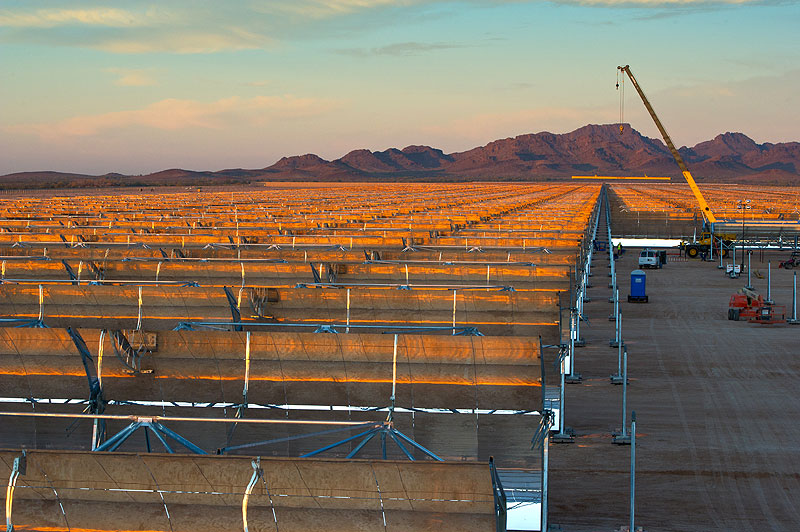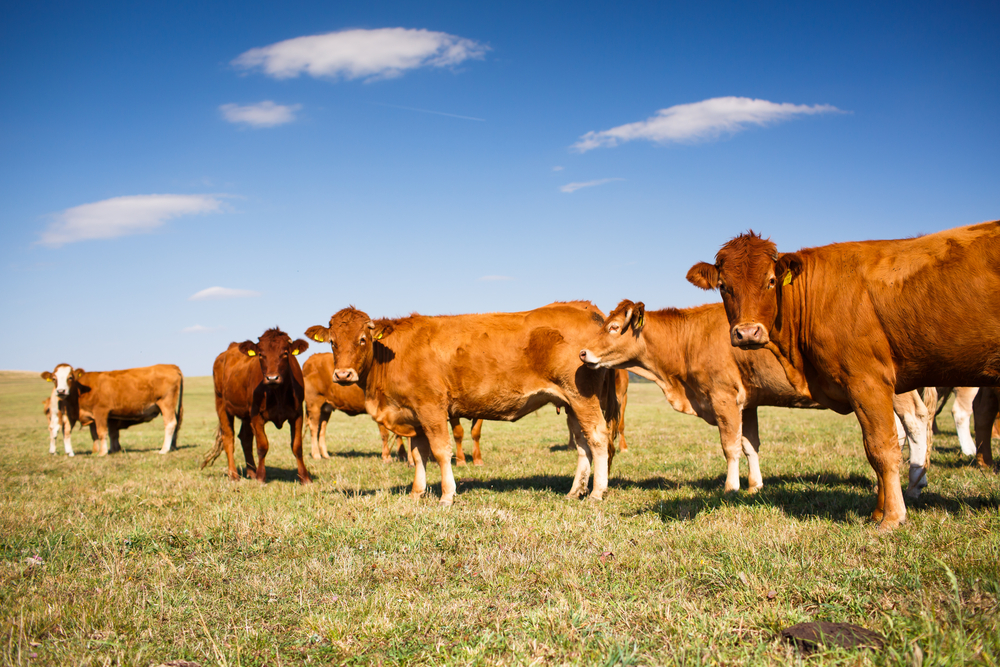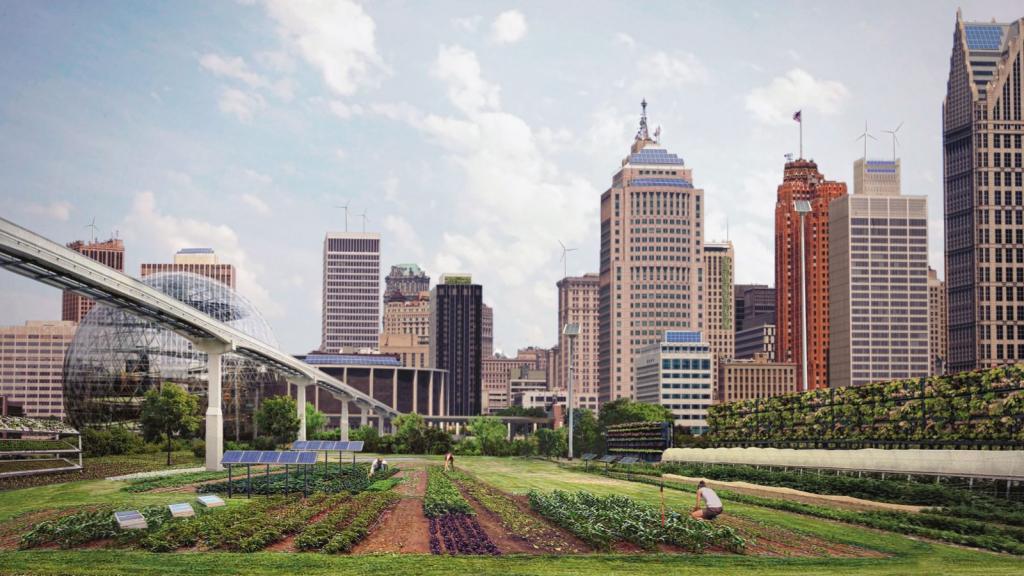When UC-Berkeley ecologist Whendee Silver first heard about the idea behind the Marin Carbon Project, she was pretty skeptical. The group wanted her to study the land they were ranching to see if putting compost on grasslands might stimulate the landscape to siphon carbon out of the atmosphere and incorporate it into the soil.
“I doubt I could measure it,” she told the group, which had assembled at Lawrence Berkeley Lab. “And you won’t like the results if I can.”
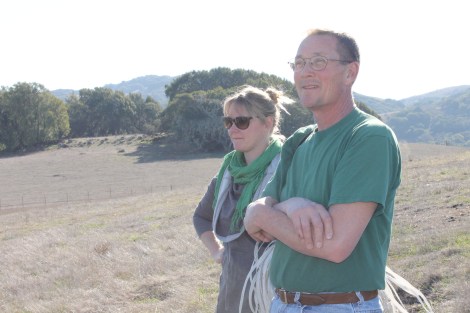
John Wick and Lynette Niebrugge, soil scientist for the Marin Resource Conservation District.
For years, ranchers have been drawn by the prospect of using their rangelands to soak up carbon. That would mean more grass, richer soil, and less planetary catastrophe. But hard science to support the idea has been lacking. Some range scientists suggested the idea was bunk.
Silver agreed to take on the project. Now, after five years of collecting data, she has been surprised by the results.
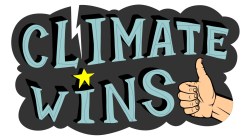
Join Grist for an exploration of recent climate wins. This is a guarded, cautiously optimistic thumbs up, mind you.
“It was quite possible that we might have found that you can’t sequester carbon in the soil. But we saw that you can,” she said. “And we could have found that trying to measure carbon captured in the soil could have been like looking for needles in a haystack. But it’s more like looking for bricks in a haystack.”
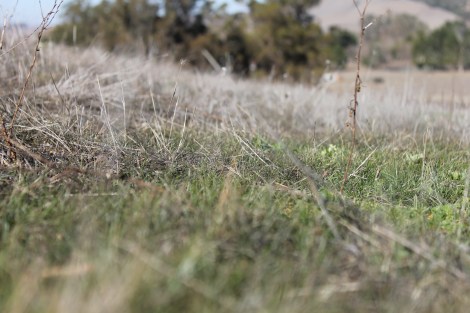
Green shoots in drought-ridden California.
At this point, she says, she’s cautiously optimistic: “This is a way that agriculture could move from being part of the problem to part of the solution.”
In contrast to Silver’s cautious optimism, John Wick, who is testing out the concept on his land, is exuberant.
“We have 3.5 billion hectares of grasslands [globally],” Wick said. “The most conservative estimate shows that if we do this with 2.7 billion hectares it would get atmospheric carbon down to 350” parts per million, the level that might prevent human-driven global warming from escalating. “There is the capacity to do this while producing food, fuel and fiber. And helping wildlife.” He paused for a perfectly timed beat: “And having a lot of fun.”
On a bright December morning, Wick was holding court in his ranch house outside the town of Nicasio, in California’s coastal foothills just north of San Francisco. It’s close enough to the water to get fog and the occasional scent of salt spray. Wick is tall and thin, with closely cropped hair and a delighted smile that has graced his face frequently enough to crease happy wrinkles into his cheeks.
When he bought the ranch in 1998, he didn’t want anything to do with agriculture, he told the group of nonprofit administrators and government conservationists munching on pastries in his sun room. He liked birds and wild things, not hulking domestic bovines that frequently met him on his own porch. So he got rid of the cattle in hopes of creating wilderness.
But Jeff Creque, an ecologist that Wick had hired, suggested that the land might be healthier if it were grazed. And indeed, after a couple years of strictly controlled grazing, he saw a huge increase in wildlife. His meadowlark population rose from five to over a hundred. Eagles showed up. Predators moved in. As Wick spoke, a bobcat kitten appeared outside the window and came gamboling toward the house.

Rangeland ecologist Jeff Creque.
Creque kept telling Wick that he should do more — that he should be trying to capture carbon. Wick didn’t warm up to that idea until he reframed it with his own poetic characterization.
“We just had the cows here for five weeks,” he said. “In five weeks, they were putting on 5,000 pounds of beef. And I realized: That’s 5,000 pounds that literally comes out of thin air.”
The grasses were drawing carbon dioxide out of the atmosphere and transforming it into sugars, which the cows were transforming into meat: An alchemical conversion of air into brisket. If that was possible, why couldn’t he also turn carbon into dirt?
In 2008, with Silver and her team monitoring, they spread half an inch of compost over test plots. In response to this added fertility, the grasses sprang up, growing faster and pulling more carbon into the soil. There was 50 percent more growth on the test plots than off, and at the end of the year that growth had netted a metric ton of carbon added to the soil per hectare. The next year — with no further treatment — the soil had captured another ton of carbon, the next year another ton, and so it has continued.
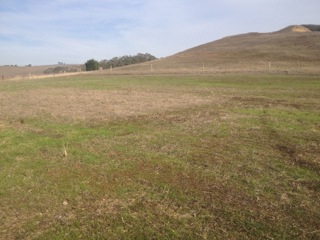
Marin Carbon ProjectCompost spurred grass growth and soil formation. The brown square in the middle of the photo did not receive any compost.
“What we’ve done here is start up a carbon pump,” Wick gloried.
Best of all, they saw that some of the carbon was getting locked into the sort of molecules that won’t give it back up into the air quickly.
“He should have a TED talk,” someone whispered behind me.
It does sound good, almost too good to be true. And, of course, there are a couple of problems.
The first problem has to do with cows and compost. Both create methane, a much more potent greenhouse gas than carbon dioxide. But the negative effect of these methane emissions did not outweigh that ton of carbon. And when Silver’s team did a full lifecycle analysis, they found there was more to the story. There are always emissions associated with cows and compost, and, when considered in sum, the methods of the Marin Carbon project actually amounted to a huge reduction from business as usual. That’s largely because there’s often no market for the compost we produce. The fact that the Marin Carbon Project created a use for that compost put the lifecycle analysis back in the green, in a big way. (This sounds complicated, but I’m actually oversimplifying: You can read the whole analysis here.)
Still, I asked Silver, wouldn’t it be better for the climate if cows completely disappeared off the face of the Earth and they simply spread compost?
She laughed. “Well, beef is a pretty important food for a lot of people,” she said. “And we think grazers actually play a really important role in this story, in that they help to manage the system.”
After grasses are grazed down, they regrow to form a new seed head. Without grazing, grasses grow less, dry up faster, and create a greater risk of fire, a serious source of carbon emissions. So even if we had a magic wand, we wouldn’t want to be too hasty about disappearing the cows.
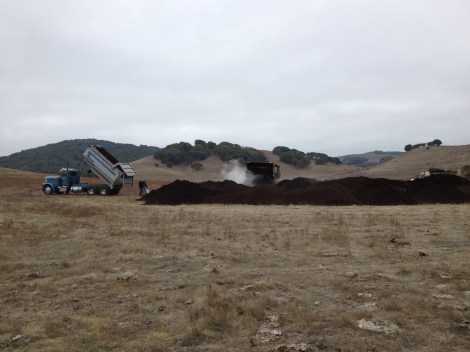
Marin Carbon ProjectSpreading compost at Straus Dairy, in Marshall, Calif.
The second problem, aside from methane, is money. After Wick’s lecture we drove out to the Corda ranch a few miles away, where trucks had recently spread load upon load of compost on a gentle hillside. The compost costs money, as does the hauling. And the Marin Carbon Project works with ranchers to do much more — like restore streams and plant trees — all of which costs money. In the long term this investment should pay off by creating healthier soils, healthier grasses, and healthier cattle. But in the short term, many ranchers are broke.
Nonetheless, climate change might create a windfall for ranchers who are serious about restoring the land. The prospect of significantly reducing emissions grabs the attention of officials who are trying to shrink the carbon footprint of their region.
You don’t have to accept Wick’s long-term projections to accept Marin Carbon Project as a climate win. The simple demonstration that it’s possible to capture carbon in soil, and the documentation of that fact with rigorous science, is a success in itself. Already, this work has led ranchers to rescue landfill-bound compost in an effort to kickstart their degraded grasslands and transform carbon dioxide into soil.
Correction: A previous version of this story stated that the greenhouse gases produced by cattle grazing the grassland outweighed the greenhouse gases sequestered. In fact, the compost treated grasslands sequestered more greenhouse gases than the cattle produced.
